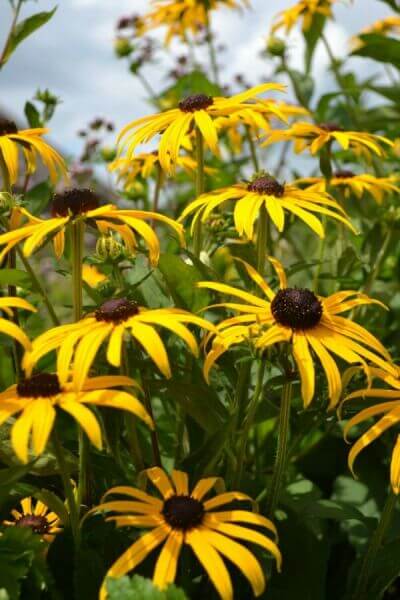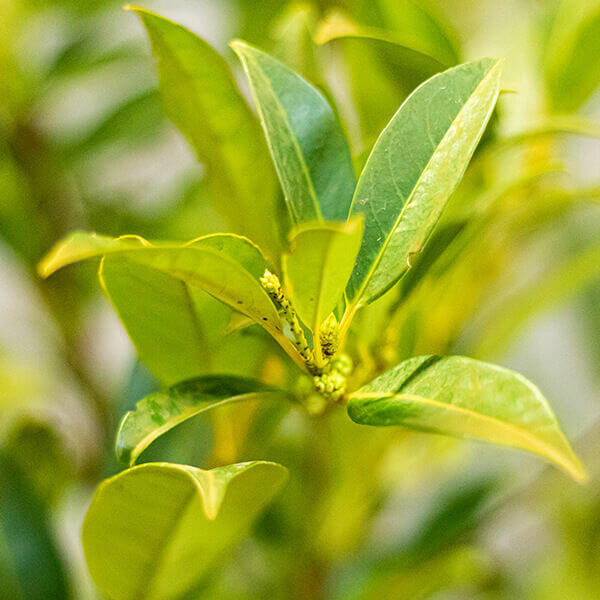Best Hedging Plants For Spring Blooms
Best Hedging Plants For Spring Blooms
Blog Article
Best Hedge Plants For Screening
Improve your garden's allure with rich hedge varieties such as Yew (Taxus), Thuja, Laurel, Photinia, and Bamboo, celebrated for their structural integrity and environmental advantages.
Yew and Thuja provide evergreen coverage and winter resilience, while Laurel offers quick development and broad, aromatic leaves.
Photinia includes seasonal beauty with its lively red foliage, and Bamboo provides a low-maintenance, peaceful ambiance.
These hedges improve air quality, decrease noise, and develop tranquil, personal areas.
Proper planting, spacing, and maintenance ensure energetic development and environmental harmony.
Explore how these lavish ranges can elevate your garden's appeal and wellness.
Secret Takeaways
Change Your Garden With Lush Hedge Varieties
- Select Yew for its dense, evergreen development and unequaled longevity.
- Choose Laurel for its quick development and broad leaves, guaranteeing quick privacy.
- Pick Photinia for its dynamic seasonal foliage, which turns a striking dark red.
- Utilize Bamboo for a low-maintenance, winter-hardy hedge with aesthetic appeal.
- Area plants 2-3 per meter and prune routinely for ideal growth and health.
Popular Hedge Plants
When changing a garden with lavish hedge varieties, it's essential to think about popular hedge plants such as Yew, Thuja, Laurel, and Photinia due to their distinct characteristics and benefits.
Yew (Taxus) is highly respected for its durability and dense, green development, making it a prime choice for sustaining landscapes.
Thuja is noted for its evergreen foliage and robust winter season resilience.
Photinia includes seasonal vibrancy with red leaves that darken over time, developing dynamic visual appeal.
Laurel uses rapid development and fragrant, broad leaves, suitable for quick privacy.
In Addition, Bamboo is an outstanding option for ambiance, providing a low-maintenance, winter-hardy alternative that enhances the garden's visual with its elegant, swaying walking sticks.
These choices deal with a variety of horticultural needs and choices.
Advantages of Garden Hedges
Garden hedges offer a plethora of advantages, making them a valuable addition to any landscape. These natural barriers are economical to carry out and provide significant wind security, boosting air circulation and contributing to noise reduction. The dense foliage of hedges like Thuja and Beech ensures personal privacy by blocking visibility, creating a remote and tranquil environment.
Hedges likewise play a vital role in microclimate policy, offering a steady environment that cultivates plant development and decreases temperature level variations. Their detailed leaf structures filter contaminants, improving air quality and contributing to a healthier garden community.
Moreover, hedges master noise reduction, absorbing and deflecting acoustic waves to lower ambient sound levels. This double performance of offering both visual and acoustic privacy enhances the total harmony and visual appeal of any garden.
Planting and Maintenance Tips
For a successful hedge, meticulous preparation of the planting location is crucial. Ensure the soil has appropriate pH and drainage to support strong root development.
Space the plants properly for the selected species. Water the hedge often throughout its preliminary development phase, adjusting as required with seasonal changes.
Implement a organized bug control and disease prevention method, using chemical or organic treatments when required. Regularly check for aphids, mites, and fungal infections.
Apply mulch to retain wetness and suppress weeds. Seasonal pruning promotes thick growth and air flow, essential for plant health.
Following these standards will help you cultivate a lively, well-kept hedge that enhances the beauty of your garden.
Spacing and Cutting Standards
Spacing and Trimming Standards
Appropriate spacing and trimming are important for cultivating healthy, visually appealing hedges. Sufficient spacing guarantees each plant receives adequate nutrients, light, and air flow.
Follow these standards for optimum hedge maintenance:
- Spacing: Position hedge plants 2-3 plants per meter to motivate robust development.
- Pruning Techniques: Regular pruning is vital for maintaining desired hedge height and shape. Trim new growth in summer and cut down older wood throughout winter season.
- Seasonal Care: Adjust cutting methods and schedules according to seasonal requirements to ensure plant health.
- Hedge Height: Regularly monitor and trim to maintain the desired hedge height and achieve consistent aesthetics.
Adhering to these actions will guarantee your hedge prospers, enhancing both the appeal and functionality of your garden.
Choosing the Right Hedge
Picking the Right Hedge
Picking the suitable hedge involves evaluating factors such as fully grown height, foliage density, and environmental strength. Effective hedge plant selection requires comprehending each types' growth characteristics and site-specific flexibility.
For example, Yew (Taxus) uses outstanding longevity and thick growth, while Thuja is notable for its winter season durability. Furthermore, considering upkeep requirements is crucial; fast-growing types like Laurel or Privet demand regular cutting, whereas low-maintenance choices like Bamboo or Ivy may be more suitable for those looking for minimal maintenance.
Environmental aspects such as soil type, light availability, and wetness conditions should likewise guide the selection procedure. This careful method makes sure the selected hedges will grow, providing both visual and functional advantages to the garden landscape.
Delivery and Planting Suggestions
To ensure your hedge plants flourish, they need to be delivered by specialized couriers and planted immediately upon arrival.
Follow these essential steps for effective planting:
- Soil Preparation: Improve the soil with raw material to improve drainage and nutrient material.
- Planting Depth: Develop a trench two times the width and equal to the depth of the root ball.
- Watering Methods: Water completely after planting, keeping the soil regularly wet but not saturated.
- Mulching: Apply a layer of mulch to keep wetness and reduce weeds.
Consumer Assistance and Service
Given the crucial role of timely support in horticultural pursuits, our customer support team is offered 6 days a week through telephone, e-mail, and social networks to use skilled suggestions and promptly address any issues. Their devotion to fast action times makes sure consumer satisfaction by resolving queries connected to plant health, optimum planting approaches, and upkeep schedules.

----------------------
Within 24 hours
6 days a week
This extensive support group, strengthened by an excellent 9.3/ 10 customer ranking, highlights our dedication to improving the gardening experience for every customer.
Frequently Asked Concerns
For How Long Does It Take for Hedge Plants to Develop?
Hedge plants generally need one to three years to end up being fully developed, with the precise period varying by types and growing conditions.
Effective care throughout this critical duration is essential for robust growth. Constant watering, vigilant weed control, and proper fertilizer application are pivotal in promoting strong root development.
For instance, fast-growing species like Laurel may establish quicker, while slower-growing varieties such as Yew might take longer. Thorough upkeep accelerates the facility procedure, leading to healthy and dense hedges.
What Are the very best Hedge Plants for Personal Privacy?
The question of the very best hedge plants for personal privacy involves assessing evergreen and deciduous choices.
Evergreen hedges like Thuja, Laurel, and Cypress supply year-round coverage, ensuring continuous privacy.
On the other hand, deciduous hedges such as Beech use seasonal personal privacy, shedding leaves in cooler months.
Key maintenance suggestions for Additional hints privacy hedges include regular cutting, fertilizing in spring, and correct spacing-- typically 2 to 3 plants per meter.
Additionally, consistent watering and diligent weed removal are crucial for promoting healthy, dense growth.
Can Hedge Plants Attract Wildlife to My Garden?
Yes, hedge plants can attract wildlife to your garden by providing important benefits like shelter, food, and nesting sites, thereby enhancing regional biodiversity. Yew, holly, and laurel are outstanding for drawing in birds, while ivy supports a variety of insects.
Nevertheless, it's crucial to keep in mind that there are some drawbacks, such as increased maintenance to handle insects and regular upkeep. Thoroughly selecting and keeping hedge ranges can help stabilize these advantages and drawbacks, ultimately cultivating a sustainable and vibrant ecosystem in your garden.
Exist Any Flowering Hedge Plants Available?
Yes, there are flowering hedge plants readily available that can boost the beauty of your garden.
For instance, Elaeagnus, also called Olive Willow, produces aromatic white flowers in the fall, adding a touch of sophistication.
Photinia, another popular choice, showcases dynamic red leaves that develop into a rich green, developing a dynamic visual result throughout the seasons.
To guarantee these plants thrive, it's vital to practice appropriate pruning strategies and seasonal maintenance, such as cutting new development in the summer and cutting down in the winter season.
These steps will help preserve the health and visual appeal of your flowering hedges.
How Do I Prevent Insects in My Hedge Plants?
To avoid pests in hedge plants, utilize natural bug control methods and preserve correct hedge care. Introduce advantageous pests like ladybugs, which prey on harmful insects, to develop a balanced ecosystem.
Routinely check your hedges for indications of infestation and promptly remove any affected parts to prevent the spread. Guarantee the health of your hedges by using well balanced fertilizers and supplying adequate water.
Utilize mulching to maintain soil wetness and correct spacing to lower plant tension and promote robust development. These practices jointly assist in minimizing pest issues and maintaining a healthy hedge.
Conclusion
In essence, choosing the right hedge varieties such as Yew, Thuja, and Laurel can change any garden into a peaceful haven. These plants provide year-round greenery, boost visual appeal, and deal practical benefits like noise decrease and wind defense.
Appropriate planting methods, accurate spacing, consistent watering, and seasonal cutting are crucial for ideal growth.
Reputable delivery services and expert customer assistance guarantee a seamless experience from purchase to planting, making it simpler than ever to elevate your outside space.
Garden hedges offer a plethora of advantages, making them a valuable addition to any landscape. These natural barriers are cost-effective to carry out and offer significant wind defense, improving air circulation and contributing to sound reduction. The thick foliage of hedges like Thuja and Beech guarantees personal privacy by obstructing presence, producing a serene and secluded environment.

Pruning Techniques: Regular pruning is vital for preserving preferred hedge height and shape. Trim brand-new development in summer season and cut back older wood during winter.
Report this page